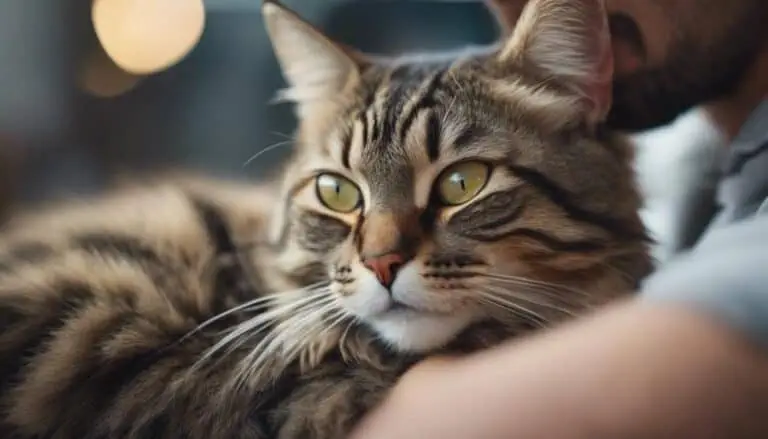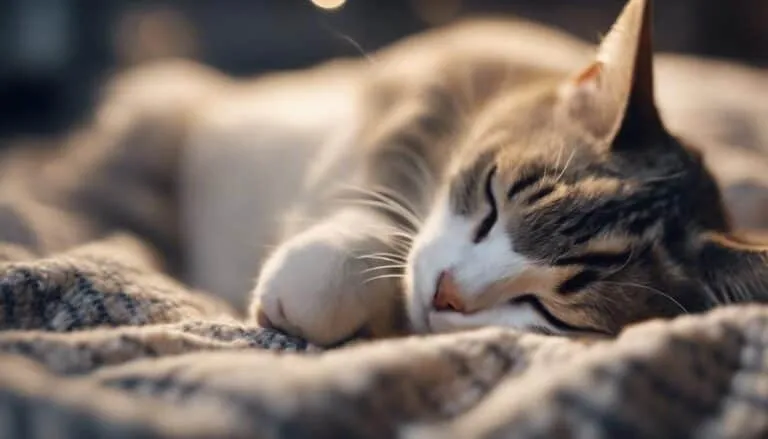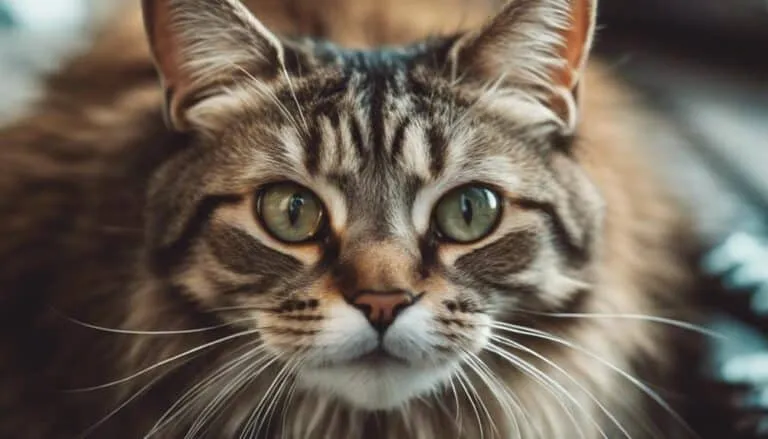The Best Fluffy Pancakes recipe you will fall in love with. Full of tips and tricks to help you make the best pancakes.

Septic arthritis may seem like a hidden danger to many cat owners, but its impact on feline health can be devastating. This condition, characterized by inflammation and infection in the joints, poses a significant threat to cats, especially those with weakened immune systems.
Understanding the causes, signs, and symptoms of septic arthritis is key to timely diagnosis and treatment. In this article, we will explore the various pathogens that can lead to septic arthritis in cats, the importance of prompt intervention, and the necessary steps to ensure the well-being of our feline companions.
By delving into the hidden dangers of septic arthritis, we can equip ourselves with the knowledge needed to protect our beloved cats from this potentially debilitating condition.
Key Takeaways
- Septic arthritis in cats is caused by pathogenic organisms such as bacteria, viruses, or fungi.
- Cats with weak immune systems or undergoing immune-suppressive treatment are more prone to septic arthritis.
- Prompt diagnosis and antibiotic/antifungal therapy are crucial for successful treatment.
- Timely diagnosis and treatment are essential to prevent complications and permanent joint damage.
Definition and Causes of Septic Arthritis
Septic arthritis in cats refers to the inflammation and infection of one or more joints and their synovial fluid, caused by pathogenic organisms such as bacteria, viruses, or fungi.
Diagnosis of septic arthritis in cats can be challenging due to the similarity of symptoms with other joint diseases. However, a thorough physical examination, joint fluid analysis, and imaging techniques such as X-rays or ultrasounds can aid in the diagnosis process.
It is important to diagnose septic arthritis early, as delayed treatment can lead to long-term effects such as joint degeneration and permanent damage. Prompt and appropriate antibiotic or antifungal therapy, along with supportive care, is crucial for successful treatment.
Additionally, cat owners should closely follow the veterinarian's instructions and treatment plan to ensure the best possible outcome for their feline companions.
Common Bacteria Causing Septic Arthritis in Cats
The identification of the specific bacterial pathogens responsible for septic arthritis in cats is crucial for effective treatment and management of the condition. The following are the common bacteria causing septic arthritis in cats:
- Pasteurella: This bacteria is commonly found in the oral cavity of cats and can cause joint infections through bite wounds or direct penetration.
- Staphylococci: These bacteria are part of the normal flora on the skin and can enter the joints through open wounds or surgical procedures.
- Streptococci: These bacteria are also part of the normal flora in the respiratory and gastrointestinal tracts and can cause joint infections when they enter the bloodstream.
Prevention methods include proper wound care, regular veterinary check-ups, and vaccination against common bacterial pathogens.
If left untreated, septic arthritis can have long-term effects such as joint degeneration and permanent damage. Therefore, prompt diagnosis and treatment are essential to prevent complications and ensure the well-being of cats affected by septic arthritis.
Other Pathogens Associated With Septic Arthritis
Other pathogens commonly associated with septic arthritis in cats include Bacteroides spp., Coliform bacteria, and Cryptococcus. Bacteroides spp. are anaerobic bacteria that can cause infections in the joints. Coliform bacteria, such as Escherichia coli, are gram-negative bacteria commonly found in the gastrointestinal tract and can spread to the joints, causing septic arthritis. Cryptococcus, a fungus commonly found in the environment, can also lead to septic arthritis in cats.
Diagnostic methods for septic arthritis in cats include physical examination, joint fluid analysis, and imaging techniques such as radiography and ultrasound. Joint fluid analysis is particularly useful in identifying the pathogen causing the infection. New advancements in the treatment of septic arthritis in cats include the use of broad-spectrum antibiotics or antifungal medications, depending on the underlying pathogen. Surgical intervention may be required in severe cases to drain the infected joint and remove debris.
Prompt diagnosis and treatment are crucial in preventing further joint damage and promoting a successful recovery in cats with septic arthritis.
Rare Causes of Septic Arthritis in Cats
Bacteroides spp., Coliform bacteria, and Cryptococcus are commonly associated with septic arthritis in cats, but there are also rare causes of this condition that warrant attention.
These rare causes include:
- Mycoplasma spp.: This group of bacteria can infect the joints and cause septic arthritis in cats. They are difficult to detect and may require specialized testing for diagnosis.
- Feline Leukemia Virus (FeLV) and Feline Immunodeficiency Virus (FIV): Cats infected with these viruses have weakened immune systems, making them more susceptible to septic arthritis. The long-term effects of septic arthritis in cats with FeLV or FIV can be severe.
- Bartonella henselae: This bacterium is responsible for causing cat scratch disease in humans. In rare cases, it can also lead to septic arthritis in cats.
Complications from septic arthritis can include joint degeneration, permanent damage, and chronic pain. Therefore, it is crucial to recognize and treat these rare causes of septic arthritis in cats promptly to prevent long-term effects and ensure the best possible outcome for our feline companions.
Signs and Symptoms of Septic Arthritis
Septic arthritis in cats is characterized by a sudden onset of painful and inflamed joints, making it crucial for pet owners to recognize the signs and symptoms of this condition.
The most common signs of septic arthritis in cats include warm and sensitive joints that are painful to touch, lameness and stiffness in affected joints, as well as lethargy and loss of appetite. In advanced cases, cats may also exhibit fever, depression, and malaise.
Timely diagnosis and treatment are essential to prevent complications and long-term effects. Management strategies for septic arthritis in cats involve prompt diagnosis, antibiotic or antifungal therapy as prescribed by the veterinarian, limiting the cat's movements until cleared by the vet, and applying cold compresses or heat packs to reduce pain and inflammation.
Delayed treatment can lead to joint degeneration and permanent damage.
Treatment and Care for Cats With Septic Arthritis
The successful treatment and care for cats with septic arthritis involves prompt diagnosis and adherence to the veterinarian's prescribed antibiotic/antifungal therapy. To ensure the well-being of your feline companion, it is important to follow these recommendations:
- Rehabilitation exercises: Engaging in gentle range-of-motion exercises can help improve joint mobility and reduce stiffness. Consult with a veterinary professional to determine the appropriate exercises for your cat's condition.
- Alternative therapies: Some alternative therapies, such as acupuncture and laser therapy, may aid in pain management and promote healing. Discuss these options with your veterinarian to see if they are suitable for your cat.
- Pain management: Your veterinarian may prescribe pain medication to alleviate discomfort. Administer the medication as directed and monitor your cat for any adverse reactions.
Importance of Timely Diagnosis and Treatment
Prompt diagnosis and treatment of septic arthritis in cats is crucial to prevent complications and ensure the best outcomes for feline patients. Early intervention plays a vital role in managing septic arthritis as it can help prevent the spread of infection and minimize joint damage.
Cats with weakened immune systems or those undergoing immune-suppressive treatment are particularly susceptible to developing septic arthritis. These factors make timely diagnosis even more critical in these cases.
Delayed recognition and treatment can lead to joint degeneration and permanent damage, making it essential for veterinarians and caretakers to be vigilant in recognizing the signs and symptoms of septic arthritis.
Following the Veterinarian's Advice and Treatment Plan
Adherence to the veterinarian's advice and treatment plan is crucial for the successful management of septic arthritis in cats. Following the prescribed treatment plan can help alleviate pain, reduce inflammation, and prevent further joint damage.
Here are some key points to consider when following the veterinarian's advice and treatment plan:
- Managing pain in cats with septic arthritis:
- Administer pain medication as prescribed by the veterinarian.
- Monitor your cat's pain levels and report any changes or concerns.
- Utilize techniques such as cold compresses or heat packs (covered with a towel) to alleviate pain and reduce inflammation.
- The role of physical therapy in treating septic arthritis in cats:
- Physical therapy exercises and techniques can help improve joint mobility and strength.
- Consult with a veterinary professional or physical therapist experienced in feline rehabilitation.
- Follow the recommended physical therapy plan, including exercises and stretching routines, to aid in the recovery process.
Applying Cold and Warm Compresses for Pain Relief
To effectively manage septic arthritis in cats, one important aspect of the treatment plan is the application of cold and warm compresses for pain relief. Cold and warm compresses are commonly used methods to alleviate pain and reduce inflammation in affected joints.
Cold compresses, such as ice packs or frozen vegetables wrapped in a towel, can help numb the area and decrease swelling. On the other hand, warm compresses, such as warm water bottles or heating pads wrapped in a towel, can improve blood circulation and relax muscles.
While both cold and warm compresses can provide pain relief, there is limited research comparing their effectiveness specifically for septic arthritis in cats. Therefore, it is recommended to consult with a veterinarian to determine the most suitable pain relief method for each individual cat.
Conclusion
In conclusion, septic arthritis poses hidden dangers to cats, causing inflammation and infection in their joints. Prompt diagnosis and treatment are crucial to prevent joint degeneration and permanent damage.
Cat owners should closely follow their veterinarian's advice and treatment plan, while also providing appropriate care such as applying cold or warm compresses for pain relief.
By understanding the risks and taking proactive measures, cat owners can help protect their feline companions from the hidden dangers of septic arthritis. Remember, an ounce of prevention is worth a pound of cure.








